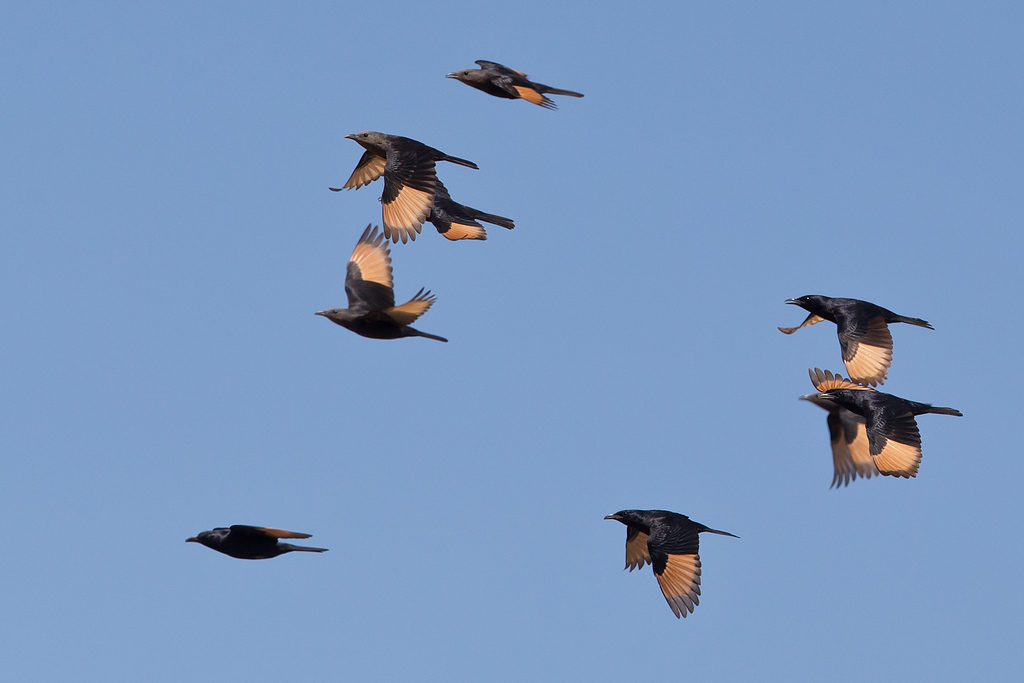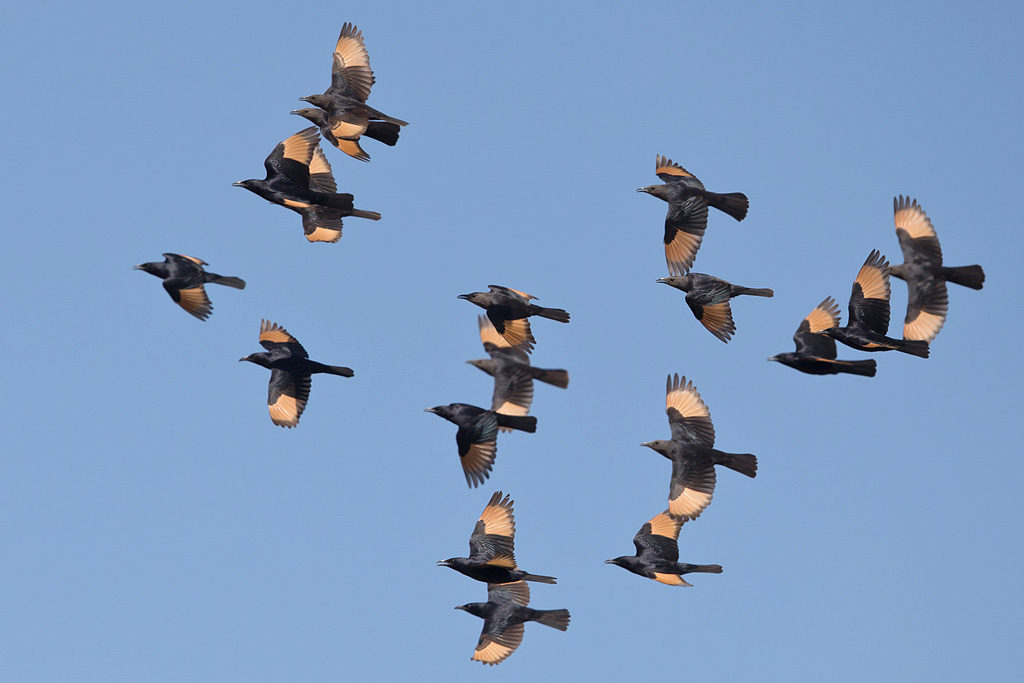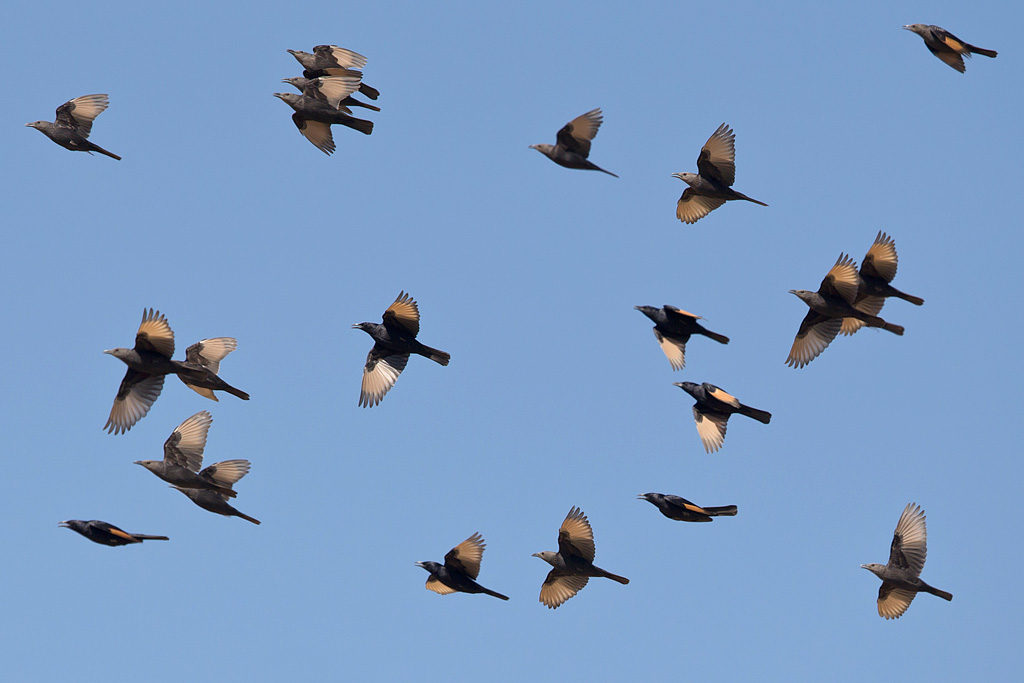>> GENERAL >>>>>
– medium-sized passerine, about size of Song Thrush
– breeding populations in SE WP
– mainly non-migratory
>> FLIGHT >>>>>
– quite different from Common Starling in flight due to different body structure
– wings and tail longer, especially conspicuous large bright wing windows
– actually unmistakable in flight
>> VISUAL ID >>>>>

Tristram’s Starling Onychognatus tristramii
BIF2920, 17/02/2015, Ras Janjari, Oman, Mathias Putze
– diagnostic pale orange primary patch
– 2CY(uppermost bird) with duller remiges – moult contrast between greater and primary coverts

Tristram’s Starling Onychognatus tristramii
BIF2921, 17/02/2015, Ras Janjari, Oman, Mathias Putze
– F (three uppermost birds) with greyish head

Tristram’s Starling Onychognatus tristramii
BIF2922, 17/02/2015, Ras Janjari, Oman, Mathias Putze
– fairly long tail
– dense flocking

Tristram’s Starling Onychognatus tristramii
BIF2923, 17/02/2015, Ras Janjari, Oman, Mathias Putze
– from below the sometimes the paler primary patch is not always prominent
>> SOUND ID >>>>>
– flight call, a quite variable, pointed overslur
– energy centred at around 2,1kHz
– obvious squeaky timbre
– far-reaching

Tristram’s Starling Onychognatus tristramii, flight call
BIF2929, 23/02/2019, Amram’s Pillars, Israel, Patrick Franke

Tristram’s Starling Onychognatus tristramii, flight call
BIF2930, 23/02/2019, Amram’s Pillars, Israel, Patrick Franke
>> COMPARISON SPECIES >>>>>
Common Starling (v)
Common Myna (v)
#songbird #passerine
#ornithology #birdmigration #birdID #birdguide #birding #birdwatching #birdsound #westernpalearctic #europe #vismig #flightcalls #middleeast #northernafrica #workinprogress